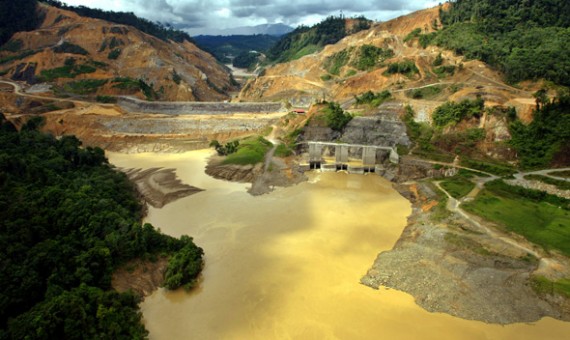In Southeast Asia, Big Dams Raise Big Concerns
More on:

This is a guest post by Prashanth Parameswaran, a former researcher at the Project 2049 Institute, who is currently conducting research on dam projects in Southeast Asia.
These past few weeks have not been good ones for large dam projects in Southeast Asia. Big hydropower projects have been caught in a web of unsafe corporate practices, fierce political violence and simmering regional tensions.
On June 9, another round of fighting erupted in Burma’s northern Kachin state, where Chinese companies are building a series of dams to power southern China. Dozens were killed, hundreds of Chinese workers were evacuated, and thousands of civilians fled the affected area. The political wing of the Kachin Independence Army (KIA), an ethnic minority armed group in Burma which has clashed repeatedly with the government, has also fiercely opposed the construction of a large dam in Myistone, a culturally and ecologically sensitive area. In fact, the group sent an open letter to the Chinese government in March to stop the dam’s construction, warning of the risk of civil war.
It is not clear what exactly prompted this latest outbreak of fighting. Some claim that the Burmese government wants to ensure that the project is built so it will receive hundreds of millions in annual power sales, while others contend that the military is using it as a pretext to exert control in the northern areas which have resisted its control. What is clear is that the dam projects are exacerbating internal conflict due to concerns regarding the distribution of benefits, damage to the environment and displacement of local populations.
Then, on June 20, Sinohydro, China’s largest dam builder, shockingly acknowledged that its construction procedures used to build Malaysia’s Bakun Dam, soon to be the largest dam in Asia outside China, were flawed. The admission came after the online Sarawak Report had published an online report, complete with photos and videos, charging that Sinohydro had widely used a technique involving adding excessive water to cement such that it was rejected by quality controllers for safety reasons. As the multi-billion dollar project is set to come online in the next few months, the assurance by one of the dam’s managers that it is “built to last” appears not to hold much water.
While Sinohydro is certainly guilty of unsafe corporate practices, the Malaysian government could also be culpable. The dam has been mired in a string of financial delays and cost overruns since its conception in the 1960s, and there are reports that the Chinese contractors were under pressure from Kuala Lumpur to finish the dam as quickly and cheaply as possible. The fact that the rush to complete the dam now could have jeopardized its safety raises serious questions.
Trans-boundary concerns have also been raised recently along the Mekong, one of the world’s longest rivers. On June 23, reports surfaced that Laos was pressing ahead with constructing its 3.5 billion dollar Xayaburi dam, in violation of an earlier regional agreement to suspend the project due to various environmental concerns by downstream countries in April. This is despite the fact that a report by Mekong River Commission, the body charged with promoting trans-boundary sustainable development, suggests that there are “fundamental gaps in knowledge” about how the project will affect the migration and population of dozens of fish species (a critical source of protein), and doubts whether the dam will even function in the long term because its reservoir may be filled with silt.
Laos’ actions not only represent a breach of trust, but threaten to undermine already fledgling efforts at regional cooperation in an ecosystem that supports the livelihoods of tens of millions of people. If the countries along the Mekong cannot coordinate the sustainable development of the river, gloomy projections indicate that the construction of large dams, combined with development, demographic and climate change-related pressures, could potentially trigger a serious crisis characterized by water shortages, forced migration, food insecurity, prolonged floods and droughts.
All this is not to suggest that large dams are never the right option. Hydropower is a cleaner, renewable energy source, and it is one form of powering energy-hungry countries and supporting otherwise poor, landlocked countries like Laos or eager companies from China. Yet in the rush for huge gains in power and profits, companies and countries in Southeast Asia and beyond would do well to understand that in pursuing big dams, they could also incur large political risks, raise safety concerns and trigger devastating regional effects. If they do not, we are likely to see these headlines become even more frequent in the near future.
More on:
 Online Store
Online Store